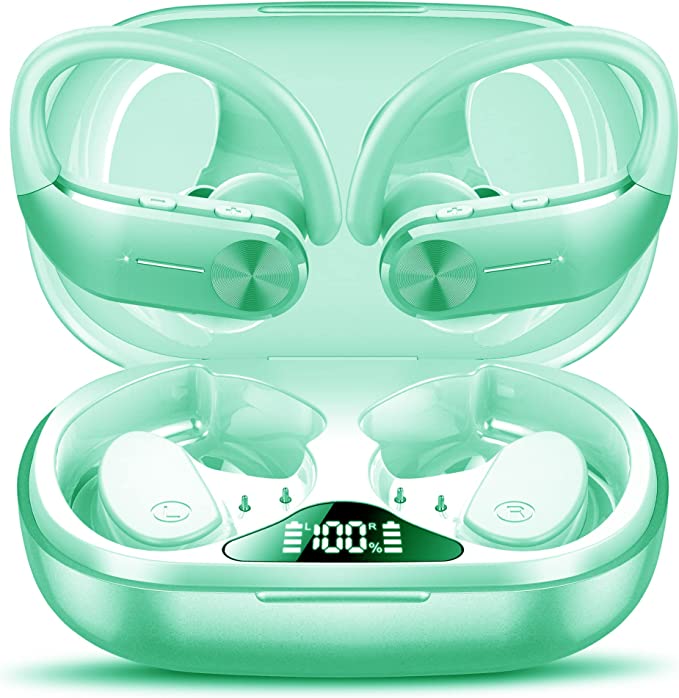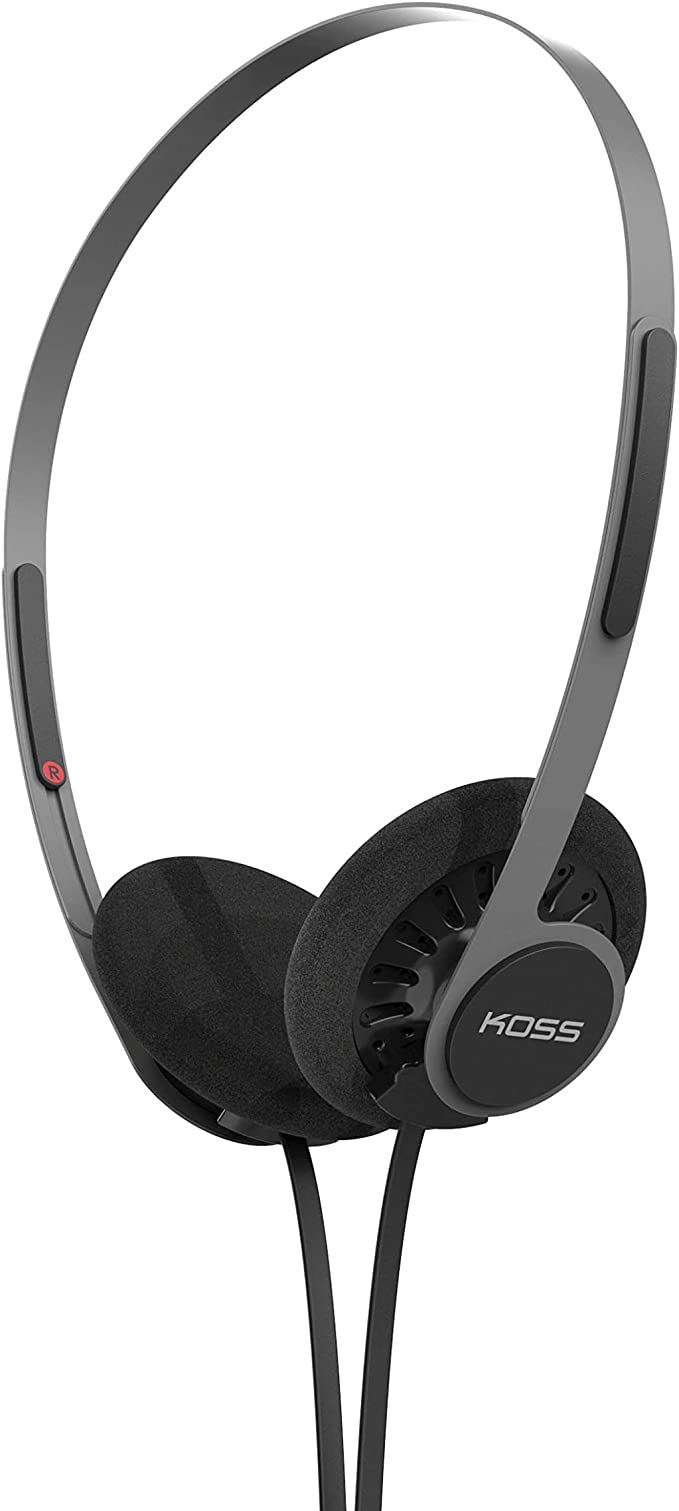In the rhythm of modern life, wireless earbuds have become almost an extension of ourselves. They pipe podcasts into our commutes, power our workouts with music, and keep us connected through calls, all without the tyranny of tangled wires. It feels like magic, but beneath the sleek plastic shells lies a fascinating world of intricate science and clever engineering. What exactly makes these tiny marvels tick?
Let’s embark on a journey beyond the marketing hype and specification lists. We’ll use the hadbleng Q28S PRO Wireless Earbuds not for a review, but as our tangible case study – a lens through which we can explore the key technologies that define the wireless audio experience today. Prepare to unravel the secrets behind features like Bluetooth 5.3, impressive battery life claims, water resistance ratings like IPX7, and the quest for crystal-clear calls.

The Invisible Thread – Demystifying Bluetooth 5.3
Think of Bluetooth as a sophisticated, invisible thread connecting your devices, or perhaps your own personal, short-range radio broadcaster. It’s the technology that snips the final cord, granting us audio freedom. Its rather unusual name, interestingly, traces back to Harald “Bluetooth” Gormsson, a Viking king famed for uniting Danish tribes – much like the technology aims to unite different electronic devices. This naming tidbit comes courtesy of the Bluetooth Special Interest Group (SIG), the organization stewarding the technology.
At its core, Bluetooth works using short-range radio waves in the 2.4 GHz frequency band to exchange data. The hadbleng Q28S PRO utilizes Bluetooth 5.3. While the version numbers might seem like minor increments, each iteration brings meaningful improvements. Compared to older versions like Bluetooth 4.x, version 5.3 generally offers enhanced connection stability (fewer annoying dropouts), improved power efficiency ( kinder to your battery), and better management of wireless traffic, potentially reducing interference in crowded signal environments. It also lays groundwork for features associated with LE Audio, the next generation of Bluetooth audio.
What does this mean for your listening experience with the Q28S PRO? It translates to the claimed benefits of quick pairing (automatically connecting to your known device when taken out of the case) and a reliable connection up to a stated range of 30 feet (though physical obstacles can affect this). The real user value? A smoother, less frustrating wireless experience, letting you focus on your audio, not on troubleshooting a fickle connection.
The Unseen Powerhouse – 48 Hours of Freedom & Battery Secrets
One of the most persistent challenges in portable electronics is the tug-of-war between device size and battery life. Earbuds, being inherently small, can only hold so much charge internally. The clever solution? The charging case. The Q28S PRO comes with a case boasting an 800mAh (milliampere-hour) capacity. Think of mAh as a measure of electrical charge the battery can hold – like the size of a fuel tank for electrons. This case acts as a mobile power hub, a personal energy top-up station for the earbuds. It allows you to recharge the buds multiple times on the go, dramatically extending the total potential playtime – up to a claimed 48 hours for this model. (It’s worth remembering that actual playtime always depends on factors like volume level, audio codec used, and connection quality).
Powering these devices are typically Lithium Polymer (Li-Po) batteries, a common workhorse in modern gadgets known for their relatively high energy density and ability to be shaped flexibly to fit tight spaces.
A particularly user-centric feature highlighted on the Q28S PRO is the dual LED digital display. This isn’t just cosmetic; it directly tackles “battery anxiety.” Seeing the exact percentage of charge remaining in the case, alongside status bars for each earbud, gives you clear, actionable information. No more guessing if you have enough juice for your workout! It’s a simple application of battery monitoring circuits providing tangible user convenience.
Finally, the adoption of Type-C charging reflects a welcome industry trend towards standardization. Its reversible connector eliminates fumbling, and it supports potentially faster charging protocols. The claim of fully charging the case in about 2 hours means less downtime and more listening freedom. The user benefit is clear: the promise of long, uninterrupted listening sessions without constantly being tethered to a wall socket.
Built for Life’s Adventures – Fit, Feel, and Facing the Elements (IPX7)
If you’re using earbuds during a run, workout, or even just a brisk walk, two things become paramount: they need to stay put, and they need to withstand the rigors of activity, including sweat and maybe even rain. The Q28S PRO addresses the first point with its over-ear design featuring flexible, soft silicone earhooks. This is applied ergonomics – using the natural structure of your ear (the pinna) as an anchor point for stability. Silicone, from a material science perspective, is an excellent choice here: it’s generally inert (skin-friendly), flexible for a comfortable fit, durable, and inherently offers some degree of water resistance.
The second point, durability against the elements, brings us to the IPX7 rating. “IP” stands for Ingress Protection, and it’s part of an international standard (IEC 60529) designed to provide clear, objective ratings for how well electrical enclosures resist intrusion from solids and liquids. Let’s decode IPX7:
* The ‘X’ means the device has not been rated for protection against solid particles (like dust or sand). This doesn’t necessarily mean it has no dust protection, only that it wasn’t tested or certified for it.
* The ‘7’ signifies a high level of liquid ingress protection. Specifically, it means the device can withstand temporary immersion in still freshwater up to 1 meter (about 3.3 feet) deep for up to 30 minutes.
Think of IP ratings like specific gear ratings for your electronics. IPX7 is like having a pretty decent raincoat, suitable for heavy rain or even an accidental quick dunk in a puddle. However, it’s crucial to understand the limits defined by the standard. IPX7 does not mean:
* It’s protected against high-pressure water jets (like a faucet or shower).
* It’s safe for swimming (prolonged immersion, water pressure at depth).
* It’s resistant to saltwater, chlorinated water, or other liquids.
* It’s protected against steam or high temperatures (like a sauna).
* It’s dustproof (due to the ‘X’).
For the Q28S PRO user, the IPX7 rating provides peace of mind that the earbuds should comfortably handle sweat during intense workouts and survive being caught in the rain. It’s about building confidence for use in less-than-ideal conditions, aligning with its sports-focused design. Imagine jogging through a sudden shower without immediately panicking about your earbuds – that’s the practical value.
The Sound and the Signal – Fidelity, Clarity, and Cutting Through Noise (ENC)
Ultimately, earbuds are about sound. The Q28S PRO features 13.44mm speaker drivers. The driver is the tiny speaker inside the earbud, containing a diaphragm (a thin membrane, here described as a “triple-layer composite”) that vibrates to create sound waves when electrical signals are applied. While larger drivers can potentially move more air and thus offer better bass response, driver size isn’t the whole story; the overall acoustic design, materials, and tuning are critical.
The claimed frequency response, covering 16Hz to 20kHz, spans the generally accepted range of human hearing. This suggests an ambition to reproduce both the deep rumble of bass (low Hz) and the crisp detail of treble (high kHz). The term “Hi-Fi” (High Fidelity) reflects this goal – aiming to reproduce the original audio signal as accurately as possible.
Now, let’s talk about call clarity, where ENC (Environmental Noise Cancellation) comes into play. It’s vital to distinguish ENC clearly from its more famous cousin, ANC (Active Noise Cancellation).
* ANC works primarily for the wearer. It uses microphones to listen to ambient noise, creates an “anti-noise” sound wave, and feeds it into the earbud speaker to cancel out the external noise, giving you quieter listening.
* ENC, on the other hand, focuses on the microphone signal. Its goal is to make your voice sound clearer to the person you are calling. It uses microphone(s) and processing algorithms to identify your voice versus the surrounding environmental noise (traffic, cafe chatter, wind). It then attempts to suppress that background noise before transmitting your voice signal.
Think of ENC as a “smart filter” for your microphone, or a “voice spotlight” that tries to dim the distracting sounds around you so only your voice shines through clearly on the other end of the call. This technology is especially valuable in today’s world of mobile communication, allowing for more understandable conversations even when you’re not in a quiet room. If you’re ordering coffee while finishing a call, ENC aims to make sure the barista’s chatter doesn’t drown out your voice for the person you’re speaking with.
The Feel of Control – Why Buttons Still Matter
In an era of sleek touch surfaces, the hadbleng Q28S PRO opts for physical button controls. While touch controls can offer a seamless look and gesture-based interaction, they aren’t without drawbacks – namely, the potential for accidental activation (especially with wet hands or during bouncy activities) and the lack of distinct physical confirmation.
Physical buttons provide unmistakable tactile feedback – you feel the click, confirming your command. This can be particularly advantageous during workouts when your focus is elsewhere, or if you’re wearing gloves in colder weather. It’s a design choice that prioritizes reliability and certainty of operation, which aligns well with the earbud’s sporty positioning.
Conclusion: Listening with Understanding
Our journey through the hadbleng Q28S PRO has taken us beyond simple features and into the underlying science and engineering. We’ve touched upon the evolution of Bluetooth ensuring stable connections, the strategies behind achieving long battery life in tiny packages, the precise meaning and limitations of IP ratings that shield our tech from the elements, and the clever processing that helps our voices cut through the noise during calls.
Understanding what Bluetooth 5.3 offers over its predecessors, what an 800mAh battery case truly enables, what IPX7 can (and cannot) protect against, or how ENC differs from ANC, transforms us from passive consumers into informed listeners. This knowledge doesn’t just help appreciate the ingenuity packed into modern wireless earbuds; it empowers us to make better choices based on our actual needs and usage patterns, seeing past the buzzwords to the real technology at play.
Technology continues its relentless march forward, but the fundamental principles of physics, chemistry, and engineering endure. By cultivating a little curiosity about the science inside our gadgets, we not only enhance our appreciation for them but also become more discerning and empowered users in this ever-connected world. Keep listening, and keep learning.




